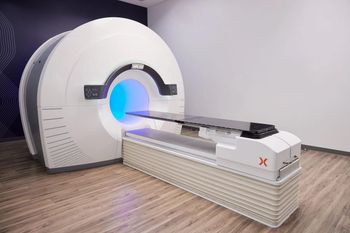
A golden age of hybridization
Sales of gamma cameras have been flat for so long they have become one of the few certainties in the otherwise unpredictable marketplace of medical imaging. True to form, the two factors in a major predictor of future change, equipment orders versus sales, were virtually equal for gamma cameras in the first half of 2004 at about $185 million for North American customers. But there is reason to believe that will change and that the progenitor of this change will be SPECT/CT.
Hybrid imaging has already cast a long shadow on the nuclear medicine community. PET floundered for decades. Reimbursement for cardiological and oncological applications boosted interest in this modality, but PET really took off only when it was linked with CT.
Vendors shipped more than $160 million in new PET/CT units to customers in the U.S. during the first half of 2004. They recorded $175 million in orders over that time period, indicating continued growth. But, after two years of boom, the market for PET/CT is slowing. Proponents had hoped the second stage of this rocket would ignite with the entry of PET/CT into cardiology. It now appears, however, that SPECT/CT will beat PET/CT to the punch.
Diagnostic hybrid scanners from Philips, Siemens, and soon GE could blunt the expected entry of PET/CT into cardiac imaging. If this happens, these hybrids could energize the nuc med market much the way PET/CTs energized the sale of PET technology. The lesson to be drawn from these events, however, goes far beyond nuclear medicine.
As the imaging community comes to embrace functional imaging, hybridized technologies may become the rule rather than the exception. For much the same reason that MR found a place in the practice of medicine despite CT's presence, it is reasonable to expect that MR will hook up with PET sometime in the future to better assess soft tissue.
Radiography and fluoroscopy are already widely accepted for their use in therapeutic applications, notably image-guided radiotherapy. Therapeutic ultrasound will appear at the RSNA meeting in the GE booth as an integral part of an MR scanner.
The linking of imaging modalities with each other and with therapeutic technologies will only accelerate. This will make markets more difficult to characterize and understand - but it will elevate radiology, making this branch of medicine even more important to patient outcome than it is today.
Newsletter
Stay at the forefront of radiology with the Diagnostic Imaging newsletter, delivering the latest news, clinical insights, and imaging advancements for today’s radiologists.




























